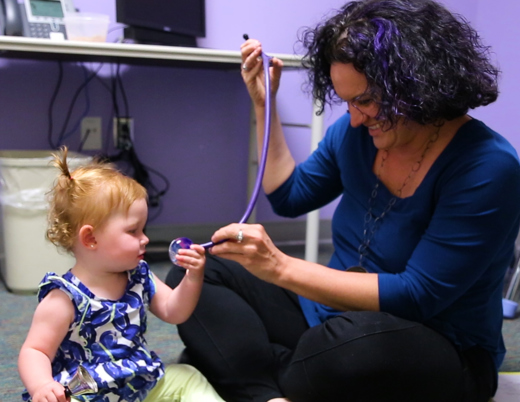Key takeaways
-
Many patients with Alagille syndrome develop cholestatic pruritus, which causes relentless itching and is an important indicator for determining liver transplant necessity.
-
This multi-institutional analysis integrated data from three clinical trials of maralixibat (MRX), an ileal bile acid transporter inhibitor, to evaluate predictors of event-free survival (EFS) and transplant free-survival (TFS).
-
Reductions in pruritus, total bilirubin levels and serum bile acid levels after 48 weeks of treatment were associated with subsequent improvements in EFS and TFS.
-
Prolonged MRX treatment shows promising results in improved survival and clinical outcomes.
Research study background
Extended use of maralixibat (MRX), the first FDA-approved drug for treating children with Alagille syndrome and cholestatic pruritus, may improve long term survival and outcomes — and even reduce the need for a liver transplant. The response to therapy in the first 48 weeks can predict long term benefits.
Children with Alagille syndrome do not have enough bile ducts in their liver to adequately allow for bile to flow from the liver to the intestines. About 50% to 75% of these patients may need a liver transplant by the time they reach adulthood. The development of unrelenting cholestatic pruritus, a condition associated with elevated blood bile acid levels that can result in constant and intense itching, is not uncommon in Alagille syndrome and is a common indicator of the need for a liver transplant.
In 2021, the FDA approved maralixibat (MRX), an ileal bile acid transporter inhibitor (IBATi), to treat cholestatic pruritus in patients 3 months and older with Alagille syndrome. In this multi-center analysis, researchers from Children’s Hospital Colorado and other institutions assessed patients with Alagille syndrome and cholestatic pruritus from three clinical trials of MRX. They evaluated predictors of long-term event-free survival (EFS) and transplant-free survival (TFS) in 76 patients treated for up to six years.
“We have never had a drug nearly this effective in reducing itching and dramatically lowering serum bile acid levels. Children on MRX are avoiding liver transplantation, and there’s also evidence for improved growth and quality of life. While not all of these patients respond to MRX, it appears to be life-changing for those who do.”
- Ronald Sokol, MD
EFS was defined as the absence of liver transplant, surgical biliary diversion, hepatic decompensation or death, while TFS was defined as the absence of liver transplant or death. Patients were evaluated for 43 potential predictors of EFS and TFS ranging from age, pruritus, biochemistries, platelets and serum bile acids (sBA).
A clinically significant one-point reduction in pruritus scores (range of 0-4) at week 48 with MRX treatment was linked to markedly improved EFS (from 57% to 88%) and TFS (from 57% to 93%). Patients with lower bilirubin and sBA at week 48 also showed similar improved EFS and TFS. Patients with multiple poor outcome predictors on MRX had EFS and TFS below 50%. A single predictor still yielded a positive EFS and TFS of 87% if other risk factors improved. Reduction in pruritus remained linked to improved EFS, even in individuals with high bilirubin.
Clinical implications
This analysis reveals key insights into the long-term outcomes of patients on IBATi, highlighting predictors of EFS and TFS. Patients on prolonged MRX with positive responses may experience enhanced survival and clinical outcomes without liver transplant or surgical biliary diversion. Future longer-term follow-up studies of MRX treated patients will help determine if IBAT inhibitors could slow or reverse the progression of liver scarring and maintain liver function.
Featured researcher

Ronald Sokol, MD
Chief Scientific Officer, Child Health
Digestive Health Institute
Children's Hospital Colorado
Director, Colorado Clinical and Translational Sciences Institute
University of Colorado School of Medicine





 720-777-0123
720-777-0123










